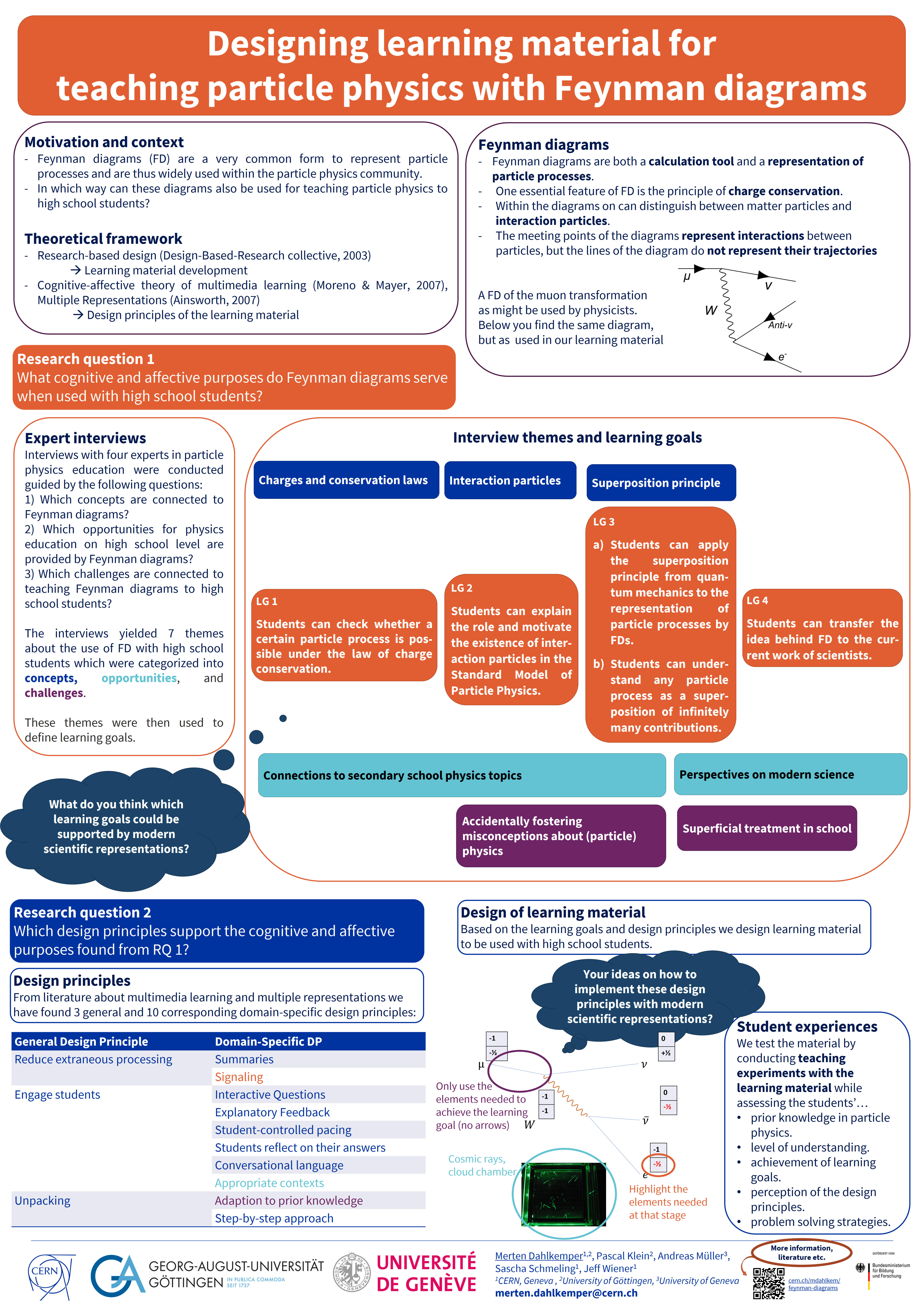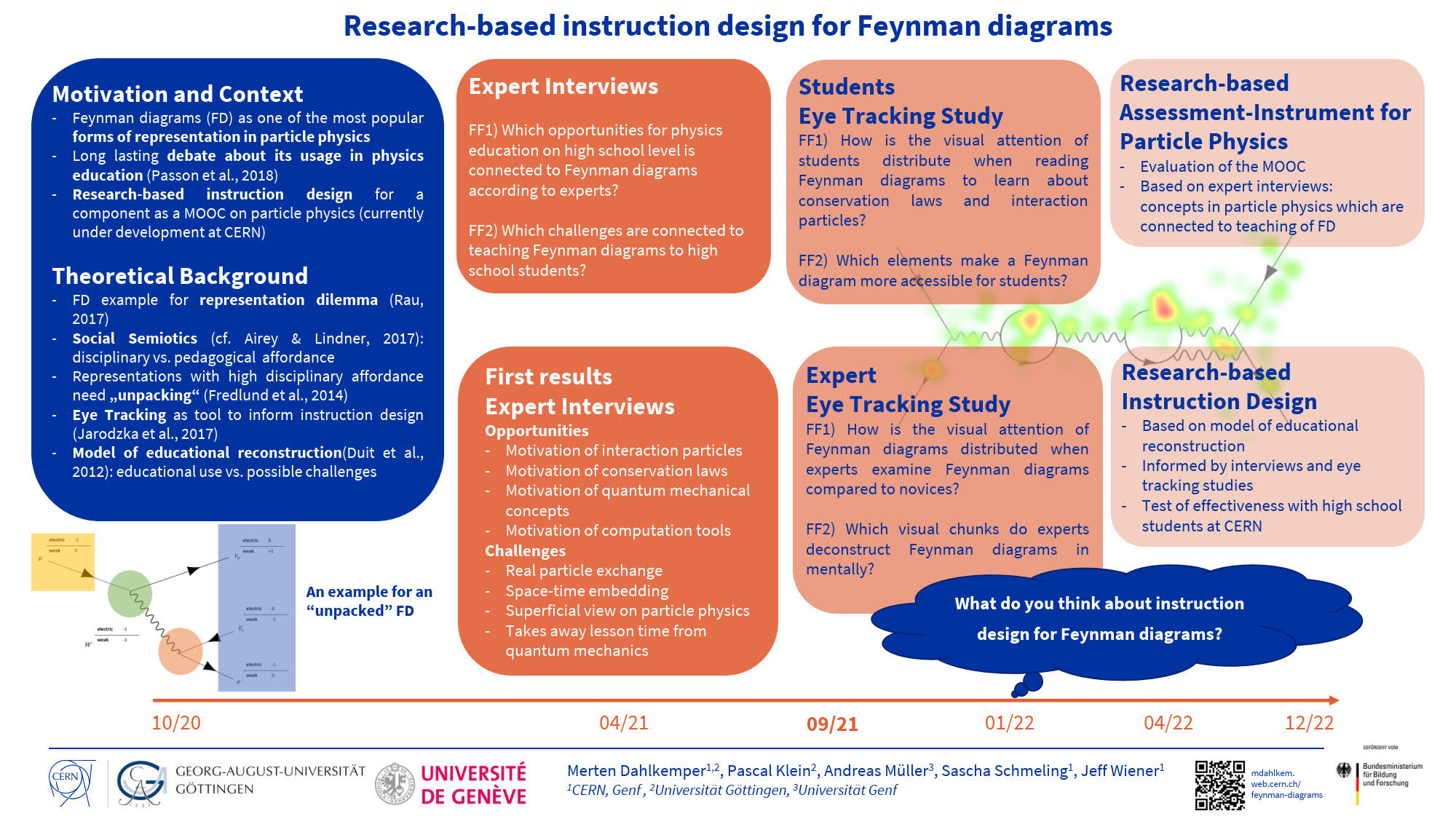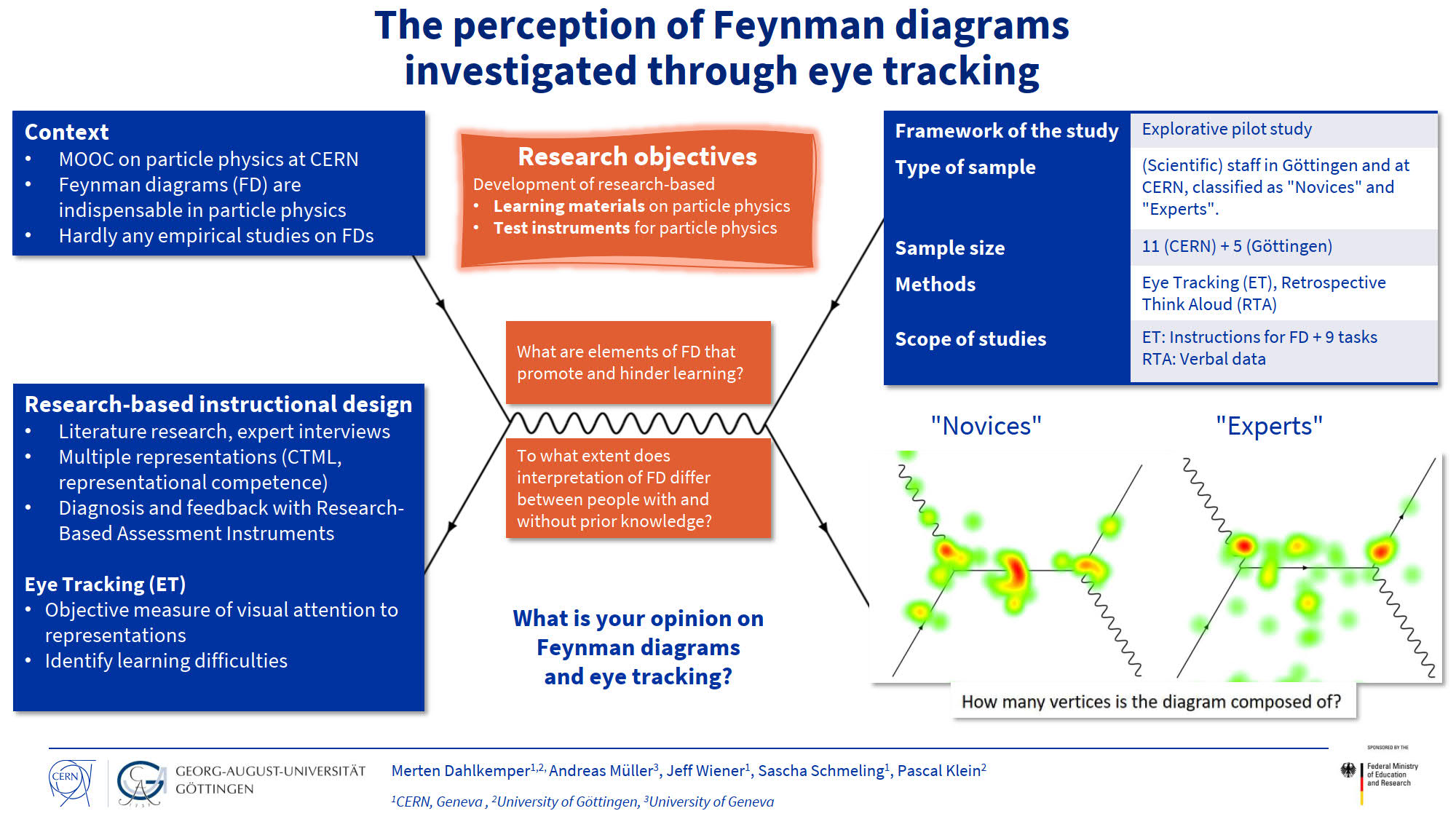My PhD project is about the research-based design of instructions to teach with and about Feynman diagrams. An (ever growing) collection of literature can be found here.
The most recent conference I presented on was the GIREP conference in Ljubljana in July 2022. There I presented this poster:

An overview of an earlier status of the project was given during the GDCP-Jahrestagung in September 2021 with the following poster:

A first pilot study on the perception of Feynman diagrams by novices and experts was conducted in February 2021 of which some of the results were presented at the DPG spring meeting on physics education in march 2021 with the following poster:

In the meantime I also conducted expert interviews on how Feynman diagrams can and should be used in physics education. In particular I looked for "opportunities", i.e. use cases where this particular form of representation could foster certain aspects of physics education as well as "challenges", i.e. things which could hinder this representation from being useful for physics education like particular learning difficulties etc.
The following opportunities were among the most mentioned. Not all opportunities are equally suited for all age groups.
- The notion of interaction particles can be motivated
- Conservation laws (especially charge conservation) can be motivated
- Concepts from quantum mechanics can be fostered (especially the notion of summation of all paths)
- Certain computing tools can be motivated (like perturbation theory)
The following challenges were mentioned as connected to Feynman diagrams. Not all the challenges are prevalent in each usage of this representation form, but in principle one must be aware of it.
- Suggestion of a physical exchange or collision of particles
- Suggestion of a spacetime embedding
- Fostering of a very superficial view of particle physics
- The consumption of much time which could be used for quantum mechanics in school